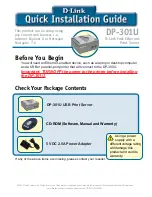
Flashing print servers
87
Flashing print servers
Periodically, you may need to rewrite the flash memory inside one or more of your print servers. For
example, let's say Customer Support recommends you upgrade to a newer or different version of
firmware to solve a network printer problem.
You can also flash your print servers to take advantage of new functions available in the latest
version of firmware. Use MarkVision Professional to flash multiple print servers simultaneously.
Note:
Not all print servers are supported.
All supported firmware (flash) files are available free of charge from the Lexmark Web site. You can
access the Web site by selecting
Firmware (On the Web)
from the All Tasks List, or by visiting
www.lexmark.com
.
To flash Lexmark print servers
1
Download the latest flash files from the
Lexmark
Web site. Store these files in a safe place
(C:\temp, for example).
2
Select the
Firmware Download (Print Server)
task from the All Tasks list, or click
Actions
Æ
Firmware Download (Print Server)
from the menus.
3
Select the print servers you want to update.
4
Click
New File
to find the downloaded files (C:\temp, for example).
5
Click
Start
.
Warning:
If the print server is turned off or reset during flashing, it may be damaged. For this reason,
try to perform flash operations at night, on holidays, or other times when printer traffic is very light.
Accomplish this using the
Scheduling
task.
Formatting storage devices
You can use the
Storage Devices
task to format a device’s hard disk or flash memory. If you select
a device in the Storage Devices task, changing the Job Buffer amount causes the hard disk to
reformat, erasing all files. Likewise, clicking the Format button for either the hard disk or the flash
erases all files located in the device’s memory.
You can only copy or move files within a single device. For example, you can move a file from the
hard disk to the flash within a printer, but not to another printer.
Print Permissions Technology
Print Permissions Technology lets an administrator restrict color printing to specific users for
supported color printers on your network. By restricting the use of color printing, you can more
closely monitor and save valuable color printing resources.
















































